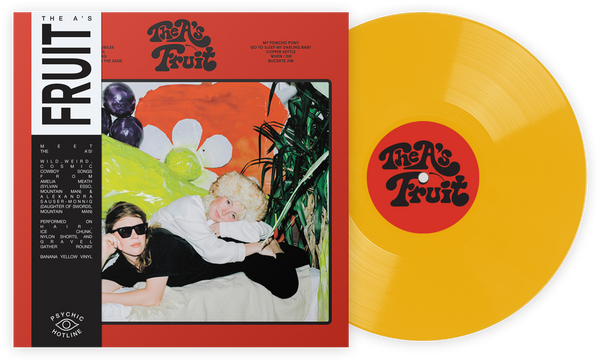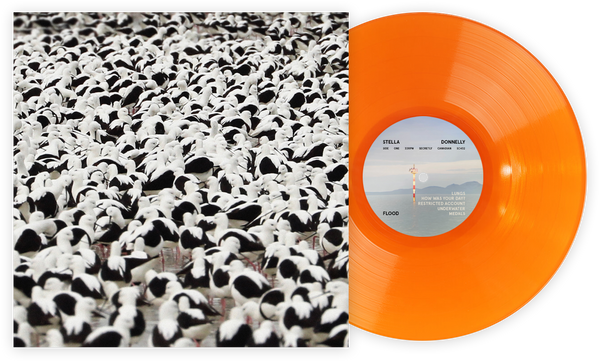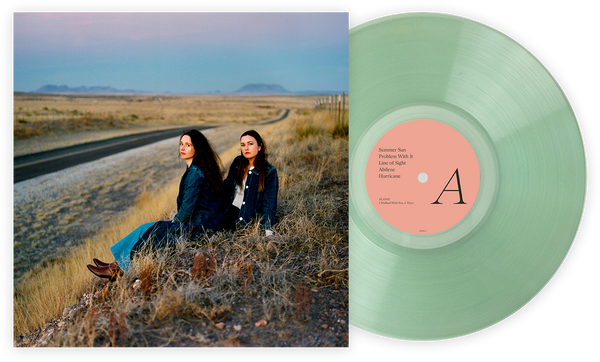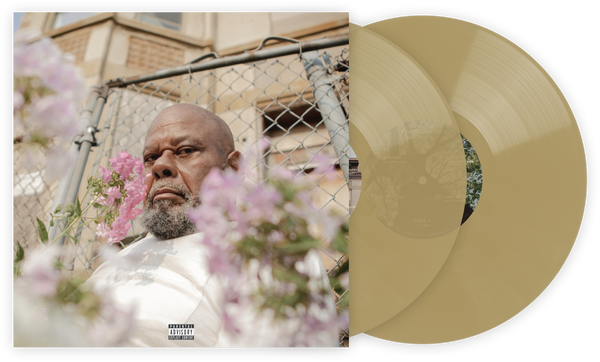Trend, który na początku tego roku zawojował media społecznościowe, to wyzwanie 2009 vs 2019, w którym publikujesz zdjęcie siebie sprzed 10 lat, a następnie zdjęcie teraz, aby pokazać, jak bardzo się zmieniłeś dzięki bardzo naturalnemu procesowi starzenia. Widząc te nostalgiczne zdjęcia z wysokich kątów, prostymi włosami i agresywnym eyelinerem, odczuwasz nagłą falę nostalgii za minioną epoką. To był prostszy czas - teraz przeszukujemy nasze cztery główne aplikacje społecznościowe, aby przetrwać w pozornie niekończącej się burzy wiadomości i zawartości. Ale jeśli byłeś nastolatkiem lub przed-nastolatkiem w 2009 roku, istniała jedna główna strona mediów społecznościowych - nasz ukochany, nieco zniknął, ale nigdy nienaśmieniony MySpace.
For those of us who remember the days of MySpace, AOL Instant Messenger and Hot Topic band tees, the “scene” era is a familiar whisper from the past, a trend that aligned with middle and high school and dictated everything from our neon-heavy fashion choices to the angsty illegal downloads on our iPod minis. But for those who need a quick refresher, you may recognize this movement by its many controversial but often interchangeable names — “emo,” “pop-punk,” “emo pop,” “scene emo,” “mall punk,” “neon pop-punk” or just “punk” if you’re trying to get into a fight on the internet. But these catch-all terms (that no one can seem to agree on) all attempt to refer to the same period of time — that sweet spot around 2006 to 2009 that saw the rise of MySpace, skinny jeans, straightened hair and music that would unknowingly change the industry forever.
As one of the first major styles of music to garner popularity through social media, the MySpace scene era is not often discussed in tandem with rock or pop history. It’s relative recency causes it to go overlooked in critical discourse and is mostly aestheticized for nostalgia’s sake with events like Emo Nite, or listicles compiling “things only scene kids will remember.” These images trigger memories without placing this crucial piece of culture within the overall discourse of music history, perhaps because we haven’t created enough distance from the memes and the memories to give the music the credit it’s due.
While it would take a whole book to dissect the cultural impact of the entire MySpace scene era, looking back on the releases from a decade ago provide an easy overview of the ways this musical movement has shifted music history. That is because 2009 was the year that broke the scene; not only was it the year that Facebook surpassed MySpace in the number of unique U.S. visitors, but it was also the year of career-defining changes for many of the scene’s biggest bands.
THNKS FR TH MMRS
In the spring of 2009, Fall Out Boy embarked on the nationwide “Believers Never Die Tour Part Deux,” in support of their 2008 album Folie a Deux. The album itself was met with confusion and some backlash from fans who were disappointed in the band’s deviation from the pop-punk style it had honed and solidified on its third album, Infinity On High (2005). The tour, however, was a literal tour de force, with an opening roster that featured scene up-and-comers Hey Monday, Metro Station, Cobra Starship and All Time Low. The one-month tour would be the band’s final headliner before announcing their then-indefinite hiatus in November 2009, with the release of their first greatest hits album, Believers Never Die.
In the months before Fall Out Boy’s hiatus announcement, many of their tourmates would release career-making records and singles. Cobra Starship would release “Good Girls Go Bad” featuring Leighton Meester that August, and the chart-topping single would go double platinum. Many other bands that were considered as part of the scene — such as Paramore and Boys Like Girls — would find mainstream success in the coming year as well.
Perhaps unknowingly, Fall Out Boy’s final tour lineup acted as a hit parade: a pre-mortem tribute tour, not only for the band itself, but for the scene it helped usher into popularity.
IT’S GONNA BE MY YEAR
With the release of American Idiot in 2004, Green Day established a new standard for punk band success, defined by worldwide recognition (with the album peaking at No. 1 in 19 countries), and the chance to jettison momentary rock fame into an ongoing musical legacy.
Green Day’s post-American Idiot popularity is often blamed for punk “going mainstream,” with the band members being labeled as “sellouts” by hardcore punk fanatics. The band’s meteoric rise, however, actually forged a new path for up-and-coming bands, showing them that it’s possible to have career goals beyond headlining your local punk venues. Many MySpace scene-era acts were formed between 2005-2007 in the wake of American Idiot, so it’s no coincidence that many cite Green Day as a major influence, along with bands that were garnering mainstream success in the early 2000s through MTV like Dashboard Confessional, blink-182 and Fall Out Boy.
Green Day’s follow-up to the six-time Platinum-selling American Idiot came in 2009. Its eighth studio album, 21st Century Breakdown, solidified the band’s status as radio hitmakers, with the top 40 success of singles “Know Your Enemy” and “21 Guns.”
The same year, many newer scene era bands released highly anticipated follow-up albums. All Time Low’s sophomore album, Nothing Personal, was released in July. The album peaked at No. 4 on the Billboard 200, providing the band’s biggest first week sales at the time. (Their debut album, So Wrong, It’s Right (2007), peaked at No. 62). The album was not a deviation from the bright, ramped-up pop-punk sound that the band delivered on their debut record. Instead, the band polished their sound and leaned ever-so-slightly harder into the “pop” side of pop-punk, with big hooks, infectious choruses and anthemic lines that you can’t help but sing along to. The album’s lead single, “Weightless,” even provided the perfect pick-me-up battle cry for the average emo teen: “Maybe it’s not my weekend / But it’s gonna be my year.”
Paramore, on the other hand, took a darker approach with the release of Brand New Eyes in September. The record dove deeper than the previous RIOT! (2006) with emotional introspection, lyrical exploration of trauma and loss and intricate melodic arrangements. Former guitarist, Josh Farro, told Rolling Stone: “RIOT! was a kiddie album, but we had to do that to get to this point.” As a result, the band’s newfound musical maturity resonated on the radio waves; although officially released as a single in 2010, “The Only Exception” became the band’s most successful until the release of “Ain’t It Fun” in 2014. The single also broke ground for Paramore as the band’s first entry into the Adult Contemporary charts, and has gone Platinum in both the U.S. and Australia.
In “Looking Up,” the ninth song from Brand New Eyes, Hayley Williams sings a declaration that would foreshadow the band’s now decade-long success: “God knows the world doesn’t need another band / But what a waste it would’ve been… / It’s not a dream anymore / It’s worth fighting for.” For All Time Low, Paramore and many of their musical contemporaries, success beyond the scene seemed within reach. This desire for something bigger than the online underground was evident in the way the scene’s sound was shifting — the hooks were bigger, the choruses were catchier and the electrifying energy that makes pop-punk so infectious was channeled into amped-up ambition, with songs like The All-American Rejects’ catchy revenge anthem “Gives You Hell” finishing off 2010 at No. 10 on the Billboard Year-End Hot 100.
Prior to 2009, most scene-era success could be chalked up to online popularity, like streams on MySpace or digital downloads on iTunes. This radio breakthrough for multiple scene era artists helped set a precedent for musicians who got their start in the digital space to garner serious attention from record labels. MySpace favorite Christopher Drew — known online as Nevershoutnever! — released the now-cult favorite Me & My Uke EP independently in January 2009. That June, Drew signed with Warner Bros. Records, changed the band’s name to Never Shout Never, and released two more EPs before the end of the year.
“Fireflies” by Owl City, a beautiful, frantic, sweeping electronic anthem, managed to dominate the charts through digital downloads, peaking at No. 1 for two non-consecutive weeks on the Billboard Hot 100. Adam Young, performing as Owl City, gained success through MySpace then signed with Republic Records in 2008, releasing his debut album Ocean Eyes and the now-iconic hit single, “Fireflies,” the following year.
The growing prominence of MySpace and online musicians, alongside Billboard’s recent inclusion of digital downloads and streaming to the Hot 100 chart, gave many scene-era musicians a chance at major label representation and the chance to be at the top of the charts, and not just someone’s Top 8.
TWO IS BETTER THAN ONE
If you lived through summer 2009, then you’ll immediately recognize the opening synth beats of “Good Girls Go Bad” once you hear them. The pulsating dance club beat brings up memories of awkward gyrating at middle school dances, dueting the song in the backseat of your mom’s minivan with your best friend, and being genuinely surprised that Blair Waldorf from Gossip Girl could sing.
“Good Girls Go Bad” was the lead single off of Cobra Starship’s third studio album, Hot Mess. The album, looking back, was strangely prescient regarding the fate of 2009. Songs titles like, “Pete Wentz is the Only Reason We’re Famous” and “The Scene is Dead; Long Live the Scene” seemed to foreshadow the incoming scene bubble burst. But before the scene could “die,” it tried one last life-preserving breath — duets with teen stars.
Although the certified double-platinum “Good Girls Go Bad” was perhaps the most successful single to come out of this trend of 2009 duets, it was far from the only one. Forever the Sickest Kids, Boys Like Girls and We the Kings all released big-name pop duets that year. And while many scene-era trends seemed to come and go with no explanation — neon skinny jeans immediately come to mind — the duets trend makes perfect sense in retrospect.
One of the most highly anticipated tween television events of that same summer was Princess Protection Program, a Disney Channel Original Movie starring then-best friends and rising teen stars, Selena Gomez and Demi Lovato. In the year leading up to PPP, the pair of BFFs made a series of YouTube webcam vlogs. At the time, the concept of YouTube and vlogging was still fairly new, and not the fully formed industry it is today. It was the first time that young fans were able to get what felt like an authentic, in-depth look at their favorite Hollywood starlets. Selena and Demi weren’t the only ones making webcam vlogs at the time — they famously feuded with fellow Disney star Miley Cyrus and her best friend Mandy Jiroux over a mocking parody.
But what was so fascinating about Selena and Demi’s vlogs was that they made them instantly relatable; almost anyone who grew up in the early 2000s can see themselves in the reflection of Demi’s MacBook screen, dancing to Usher in neon sunglasses and showing off their new Hot Topic tees with their best friend. In many of these videos, Selena and Demi declared their shared love for Paramore, even apologizing, at one point referring to the band as “she,” referring only to Hayley Williams. These videos showed that even squeaky clean Disney stars knew about the scene and loved it; the stars we saw on TV knew about the bands we listened to online, and it seemed almost too cool to be true.
In 2008, Selena Gomez announced that she, like most of her other Disney counterparts, would be pursuing a career in music. But instead of being a solo artist, Selena decided to form a band, a choice that she said was inspired by her love for Paramore. In a tweet, she announced that the band Selena Gomez & The Scene, “because a lot of people are making fun of me calling me a 'wanna be scene' so I thought I would poke fun of that.”
While in the studio recording the band’s first album, Kiss & Tell, Selena met Forever the Sickest Kids, and ended up joining them to record a remix to “Whoa Oh! (Me vs. Everyone)” from the band’s 2008 album, Underdog Alma Mater. “It’s so funny,” Selena said in a behind-the-scenes video. “My record hasn’t even come out yet and I’m gonna do a single [with Forever the Sickest Kids] that’s going to come before my record!” Gomez contributed harmonies and ad-libs to Forever the Sickest Kids’ already well-known single in May; her debut album was released that September.
Other pop-scene duets were original music for a new album, rather than remixes and riffs of previously released songs. Demi Lovato lent her powerful vocals to We the Kings’ “We’ll Be a Dream,” while Taylor Swift sang on Boys Like Girls’ romantic ballad, “Two is Better Than One.”
If popstars, Disney stars and a gossip girl were the dominant tween pop culture of 2009, then the MySpace scene was the underground. All of this media was consumed largely by the same audience of young, impressionable tweens and teens, but through different media platforms. Disney stars stayed in their parent-friendly wonderland, and scene era music was blasted on iPod earphones that your parents complained would ruin your hearing. These duets melded facets of teen culture that were often seen as separate, a new cultural connection that would eventually influence a generation of millennials to appreciate cross-referential pop culture and see media as a broad, diverse whole that’s much greater than the sum of its parts.
REMEMBER ME FOR CENTURIES
The music and culture of the MySpace scene era is often seen as a thing of the past, a nostalgia trigger that’s been reduced to “rawr xD” memes and throwback posts. As with any era of music, a chunk of the bands faded into obscurity, leaving the scene behind and continuing on to lead normal lives. But many of these bands continue to make music and even thrive in their post-scene career success. Nowadays, you can’t even watch a football game without hearing a Fall Out Boy song, and both All Time Low and Paramore continue to tour on global stadium tours.
The sound of the scene era has also influenced a new generation of artists, particularly this new era of rappers. Lil Yachty once told Rolling Stone that growing up, he “didn’t know the difference between hip-hop and rock,” and listened to a variety of artists including “All Time Low, Fall Out Boy, Miley Cyrus, Linkin Park.” Lil Uzi Vert went viral from a video of him eating candy and listening to Paramore, and called Hayley Williams “the best, just of my generation.” Even Juice WRLD’s bedroom-produced hit song, “Lucid Dreams,” sounds like it could be a cut from a MySpace-era synth-emo demo. These rappers’ wide range of musical influences are a testament to the breadth of media that the internet allows us access too. Millennial artists are the first generation to have that this profound tool at their disposal, and it shows in their work.
2009 may have been a decade ago, but we are still feeling the impact of the MySpace scene era all across popular culture. MySpace allowed users to aestheticize their musical experience on an online platform by building colorful, customized layouts with a song to match our personalities. Now, our personas exist largely online, on platforms that love nostalgia, throwbacks, and rebooting things that were once popular. So the next time you see a 2009 vs 2019 post with someone declaring this year #TwentyNineScene, just remember that the scene never really died — it just cracked wide open.
Rosemarie Alejandrino is a freelance arts and culture journalist based in the San Francisco Bay Area. She is the co-founder and editor-in-chief of FLASH THRIVE zine collective, and has been published in Rotten Tomatoes, The Daily Californian, HelloGiggles, and numerous other publications. She tweets a lot about theme parks, musicals, and fictional bears @yesROSEMARIE.












